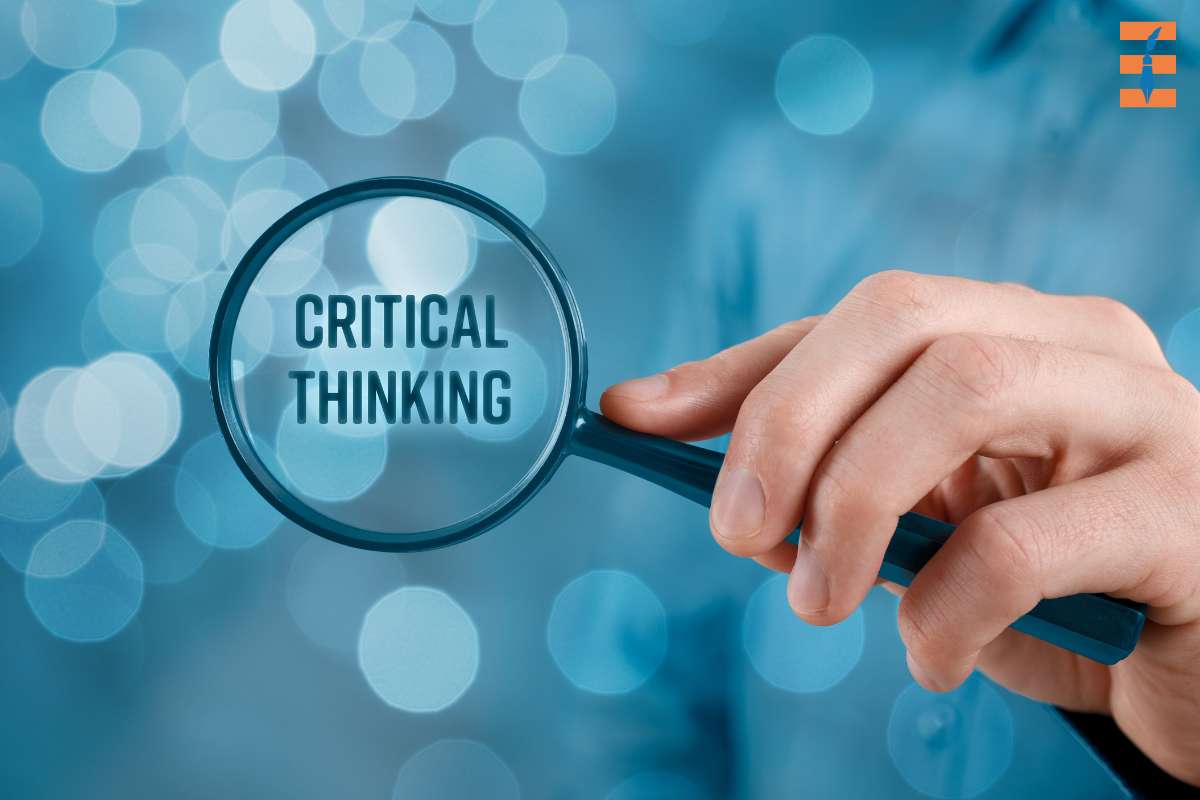Nestled within the elaborate tapestry of intellectual acumen, critical thinking emerges as the skilled artisan, deftly weaving a fabric enriched with intricate threads of logic, analysis, and creativity. Embarking on this intellectual odyssey, we delve into the very core of critical thinking skill, peeling back its layers to reveal a multifaceted definition that transcends mere cognition. Picture the masterful weaver, hands moving deftly, intertwining the warp of reason with the weft of creativity, each thread contributing to a narrative of intellectual exploration.
Critical thinking skill, the linchpin of informed decision-making, is an art form. It’s the discerning eye that questions assumptions, the analytical mind that dissects complexities, and the imaginative spirit that births innovative solutions. The loom of critical thinking is adorned with skills—analytical prowess, creative ideation, open-minded inquiry—that collectively form the symphony of cognitive dexterity. Let us traverse the loom’s intricate patterns, exploring real-world examples that illuminate the transformative power of critical thinking. These vignettes serve as windows into a realm where intellect dances with possibility, where the weaver’s hands craft not just understanding but a tapestry of enlightened insight.
Defining the Art of Critical Thinking:
At its core, critical thinking is not a mere mental process; it’s an art form, a dynamic dance between reason and imagination. It’s the ability to evaluate, analyze, and synthesize information with a discerning eye, fostering a mindset that goes beyond surface-level understanding. Critical thinkers are intellectual acrobats, gracefully navigating the vast landscape of ideas, questioning assumptions, and crafting insights that transcend the ordinary.
The Kaleidoscope of Critical Thinking Skills:
Critical thinking skills form the backbone of an agile mind, enabling individuals to navigate the complexities of life with finesse. The kaleidoscope of these skills includes:

1. Analytical Thinking
Like a detective examining clues, analytical thinking involves breaking down complex information into manageable parts, discerning patterns, and extracting meaningful insights.
2. Problem-Solving
Critical thinkers are akin to problem-solving architects, approaching challenges with a systematic methodology that involves defining the problem, generating solutions, and evaluating their effectiveness.
3. Creative Thinking
Beyond logic lies the realm of creativity, where critical thinkers wield the brush of innovation to conceive novel ideas, perspectives, and solutions.
4. Open-Mindedness
Critical thinkers embrace the spectrum of ideas with an open heart and mind, acknowledging diverse viewpoints and cultivating a spirit of intellectual humility.
5. Decision Making
Decisiveness is a hallmark of critical thinking, as individuals weigh evidence, consider alternatives, and make informed choices that align with their goals and values.
6. Communication Skills
Articulation is the brushstroke that brings critical thinking to life. Proficient communicators convey their thoughts, ideas, and analyses effectively, fostering meaningful dialogue.
7. Curiosity
The insatiable appetite for knowledge propels critical thinkers into realms of continuous learning. Curiosity is the compass guiding them through the labyrinth of information.
Critical Thinking in Action: Examples that Illuminate:

1. Literary Analysis
Consider a student dissecting a complex piece of literature. Critical thinking here involves more than summarizing; it delves into interpreting themes, analyzing characters’ motivations, and questioning the author’s narrative choices.
2. Scientific Inquiry
In the scientific realm, critical thinking manifests when researchers design experiments, scrutinize data, and challenge existing theories, paving the way for groundbreaking discoveries.
3. Public Policy Evaluation
Policymakers wielding critical thinking skills assess the impact of proposed policies, considering diverse perspectives, potential consequences, and long-term implications on society.
4. Global Issue Reflection
When faced with global challenges, critical thinkers engage in nuanced reflections. Climate change, for instance, demands an analysis of scientific data, consideration of socio-economic factors, and exploration of sustainable solutions.
5. Business Strategy Formulation
In the corporate arena, critical thinking is the compass for strategic decision-making. Business leaders assess market trends, weigh risks, and devise innovative strategies to ensure organizational success.
6. Historical Interpretation
Historians, armed with critical thinking, scrutinize historical events beyond memorized dates. They analyze primary sources, question biases, and craft narratives that reflect a nuanced understanding of the past.
7. Media Literacy
In the age of information overload, critical thinking empowers individuals to sift through news sources, discerning facts from opinions, recognizing bias, and forming well-informed perspectives.
Cultivating the Garden of Critical Thinking Skills:

Nurturing the seeds of critical thinking requires a holistic approach. Educational institutions, workplaces, and individuals alike play pivotal roles in fostering an environment where these skills can flourish. Strategies may include:
1. Incorporating Critical Thinking into Curricula
Educational systems should weave critical thinking into curricula, designing lessons that encourage questioning, analysis, and creative exploration.
2. Encouraging Diverse Perspectives
Embracing diversity in thought is essential. Workplaces and educational environments should celebrate different viewpoints, fostering an atmosphere where individuals feel empowered to express their ideas.
3. Real-World Application
Practical application solidifies critical thinking skills. Experiential learning, internships, and real-world problem-solving opportunities offer platforms for individuals to hone their abilities.
4. Continuous Learning
Critical thinking is a lifelong journey. Encouraging a mindset of continuous learning through workshops, seminars, and exposure to diverse disciplines ensures a dynamic intellectual landscape.
5. Promoting Reflection
Creating spaces for reflection is crucial. Journaling, discussions, and self-assessment facilitate the internalization of critical thinking skills, transforming them from theoretical concepts to practical habits.
Conclusion:
Critical thinking skill assumes the role of the conductor, wielding the baton to orchestrate harmonies of insight, innovation, and the cadence of informed decision-making. As we embark on the unraveling journey through the layers of this intellectual tapestry, we don’t just define critical thinking or enumerate its skills; we immerse ourselves in its profound impact, a transformative force shaping not only individuals but resonating through the very fabric of society.
Consider it an art form, a masterpiece where the strokes of analytical prowess, the hues of creative ideation, and the dynamic tempo of open-minded inquiry converge. Critical thinking, in essence, is the beacon that illuminates the path toward a more enlightened and resilient future. It’s a skill to be meticulously honed, an ever-evolving symphony resonating with the possibilities of a more profound understanding of the world and our place within it.










